10 easy ways to use less plastic

My mum was a war baby, as she liked to remind us often. Even though she was a small child at the end of World War II, privations and rationing carried on for many years. From a working class family, she still values everything and throws away nothing. Thrift and make do and mend was second nature in our family. She would wash plastic bags and hang them on the line to dry to reuse; she would wipe tin foil and store it away for next time. At Christmas we would unwrap our presents as carefully as possible so that she could iron the wrapping paper for next year.
After following the rest of the consumer sheep blindly for a while (the 80’s have a lot to answer for), I have now become my mother. I reuse and wash plastic bags. I wipe tin foil and fold it into drawers.
Seeing the clogged seas and mountains of plastic, it’s easy to feel helpless, but many small actions can make an impact. Like with food sourcing, it often involves pausing for thought about your decisions to make a better choice. I know I’m far from the only one talking about this but here are some of the easy ways we’ve changed the daily behaviour in our house which might inspire or remind you. I’d love to hear any ideas you have too …

How to use less plastic
1) Use loose tea
Did you know that around 96 per cent of teabags are made with polypropylene? This is a synthetic resin which is added during the sealing process. Plus there are the ones that have a little tag of paper on them often secured with a metal staple.
Once you get into the habit of using a teapot and tea strainer it’s not at all arduous. There are some cleverly designed solutions to make small quantities. I particularly like the Avantcha teapot where you put a couple of spoonfuls of leaf tea into the central column, add the water and put on the lid. When the tea is brewed to your liking you can remove the filter (onto a glass dish). The lid has a rubber edge so that you don’t burn your fingers. I have one that makes two cups which is perfect for KP and me.
To make a single cup I use a really nifty little thing. Again it’s really well designed. You put a spoonful of tea into the small mesh cylinder and press on the top (made from some kind of silicone). Put it in your cup or mug and pour in the hot water. The little lid is a ball so the gadget stays upright by floating. There is a little tag to remove it easily onto a little silicone carrier without burning your fingers.
If you are absolutely wedded to tea bags there are some plastic free ones around which are totally compostable. Don’t confuse them with biodegradable – these contain materials which will eventually break down after a much longer time.
Old tea leaves degrade naturally on the compost heap (or Bokashi) and are great for the garden. You can also do this with some plastic-free teabags, but it takes a lot longer for them to decompose.
Where to find:
Teapot – Avantcha (a UAE company that ships worldwide). Infusion tea strainer from Infusion (I bought mine in Debenhams UK) A clutch of small brands are plastic free right now including Teapigs and with Clipper about to launch one that uses a material made from bananas. Reports say that PG Tips are switching to fully plant-based, biodegradable tea bags soon. I’m not sure whether this is worldwide or just in the UK.
2) Give up cling film
We’ve become so reliant on plastic wrap that I thought it would be really difficult to give it up, but after a year without it I don’t miss it at all. I use organic cotton covers coated with beeswax and coconut oil that mould beautifully around bowls or over plates with the warmth of your hands. You wash them gently after use. Occasionally I’ll use foil, which is also washed after use. I have a big stack of plastic containers which I inherited after helping someone move. Leftover food often goes in these in the fridge or freezer. None of these things are suitable for microwaving. I usually just put a plate over a bowl or just wipe up the spatters.
I’ve recently discovered Stasher silicone bags. They are made of natural elements, plastic free, reusable and very versatile. You can use them in a microwave, dishwasher, freezer, in boiling water (or a sous vide machine) and even in the oven. Each bag has a built-in airtight seal. When they do eventually wear out or puncture, the company has a repurpose programme. So useful.
Where to find
Lily Bee Wrap – from New Zealand, available from Elaine Kelly in the UAE. Or you can make your own wax wraps as Celia demonstrates – plus her blog has lots of great advice about reducing waste in the home. Stasher is available from Tavola in Dubai, here worldwide.

Lily Bee wax coated covers
3) Use soap bars
I’ve switched from shower gel and liquid soap to the traditional bars and I’m loving it. The soap feels so luxurious as it foams up. It’s much cheaper and lasts for ages. It’s something that people often as give as gifts and even the handmade craft versions are an affordable luxury.
Where to find:
Most of the bars in supermarkets have a plastic wrapper around them which you avoid if buying from small producers. Markets are good places to start as the ingredients are simple (no palm oil) and mileage minimal: I’m using some from College Green Soaps bought at Stroud Farmers’ Market which have a really beautiful scent.
4) Take your own drink bottle or cup
Get into the habit of filling a reuseable bottle with tap water and taking it with you (see below). Stash a coffee cup in your bag if you use take outs. Even though disposable cups look like cardboard they are reinforced with plastic. Support companies that give incentives to customers who bring their own drinking container.
Where to find:
We love the design of the glass Keep Cup with its tactile cork ribbon. There are also many silicone versions available if you are worried about breakages. If in the UK, South West chain Boston Tea Party sell biodegradable Ecoffee ones at a subsidised rate and have banned all single use plastic cups, straws etc from their cafés – hooray.
5) Drink tap water not bottled
The explosion in bottled water over the last two decades has been a major source of plastic waste. If you don’t like the taste of tap water there are various filters which are effective and simple to use. In the UAE, you can banish the large plastic containers by investing in a filter from Liquid of Life. The advantages are many, including never running out of drinking water and not ingesting chemicals caused by the sun reacting with plastic (which are potentially cancerous). The filter fits neatly under the sink and only needs changing once a year. It could even save you money.
If you like cold water just fill up some glass bottles and keep them in the fridge – much nicer than having an ugly water cooler in your kitchen too (very The Office).
Where to find:
Here’s a recent round-up of the best water filter jugs by the Independent. Liquid of Life in Dubai are really excellent and supply the filter that fit under your sink so you can drink tap water – a small company worth supporting.

Take your own water bottle
6) Take your own bags and containers
Keep jute bags in the car, invest in some net bags for fruit and veg and always have a collapsible bag with you. Avoid pre-packed fruit and veg. If you really can’t avoid taking a plastic bag make sure you wash and reuse it as much as possible. Plastic bags are used for an average of 12 minutes, but a single plastic bag has a life expectancy of up to 1,000 years.
Many restaurants will fill your containers for takeaway now. Avoid plastic egg cartons. I reuse the cardboard ones by taking them to the farmers’ market and buying from the stalls with loose eggs.
By buying direct from the producers e.g. a bakery rather than at supermarkets it can be easier to use paper bags or your own packaging. My favourite olive lady will put things into glass jars if you take them to the farmers’ market.
Where to find:
My favourite fold away is a Clipbag (from Inside Out in Tavistock) – which you can find here (trying to support small companies over Amazon). Produce bags are available in the UAE at the Green Ecostore.
7) Say no to straws
Does it drives you mad when plastic straws are given as standard? It does me and as for those plastic stirrers… Things are changing slowly due to people power. If ruining your lipstick is something that worries you take a metal straw.
Where to find:
Reusable metal straws are widely available (I bought a copper one at Brick Lane market). In the UAE Azraq sell them = support their #stopsucking campaign where they encourage local businesses who ditch plastic straws.
8) Buy loose and in bulk
Seek out food shops that will sell the basics by weight rather than pre-packaged. Otherwise buy in bulk so that your use of packaging is lessened. See if you can buy with a group of friends from a wholesaler. Save your old glass jars and refill with cereal, lentils, nuts, seeds, dried fruit, rice, pasta and spices.
Where to find:
It does take some searching to find food shops who sell loose dried goods. If you are in London, Whole Foods has a good range. In the UAE, Waitrose has dispensers for nuts and Union Coop sells a wide range of nuts and spices loose. Small tea and coffee specialists might sell to you this way.

A Stasher bag
9) Clean up your cleaning up
I adore the new Instagram sensation Mrs Hinch but not what’s in her cupboards (her ‘Narnia’ of cleaning products). We’ve been sold to so effectively that there are chemicals for everything imaginable, especially in the kitchen. Buy cleaning cloths made of natural materials that go in the washing machine rather than plastic-based disposable cloths (J-cloths etc) and cleaning wipes. Buy refillable products or make your own natural cleaning products here and here for ideas.
Where to find:
Ecover does a refill service in the UK . I bought my washable E-cloths in Waitrose here in Dubai – while made of man-made fibres they don’t need chemicals to clean with and last for a very long time. Or make your own. Just heard that plant-based, sulphate-free and cruelty free Common Good products are available in Dubai and are refillable. A refill stations iwill be available Comptoir 102 and in Tavola branches soon.
10) Beauty for the planet
Only 9% of all the plastic ever produced has been recycled. Putting things into green bins is not effective enough. We have to stem it at source and beauty products are a huge source of plastic into landfill. I’m trying out the Lush shampoo bars right now and soap in the shower (see above). I use wash off cleanser with cotton cloths rather than plastic based make-up wipes.
I’ve changed to Neal’s Yard because as the plastic in their packaging is 100% recycled and they use glass (their deodorant for instance).
Cotton buds are one of the top ten things found on beaches. I’d like to buy organic cotton buds with 100% biodegradable card sticks but can’t find them in the UAE so I’m giving them up for now.
I stopped using scrubs with plastic micro-beads a while back. They are being banned in the UK but are still available in the UAE. Avoid products containing polyethylene (PE), polypropylene (PP), polyethylene terephthalate (PET), polymethyl methacrylate (PMMA), polytetrafluoroethylene (PTFE) and nylon. You can use loofahs or sea salt for a more natural scrub too.
Proof that this does make a difference; Lush calculated that between January 2015 and January 2016, global sales of its shampoo bars meant that 15,890,925 plastic bottles were never created.
Where to find
Lush is a good source of shampoo and conditioning bars and other ‘naked’ products. I like the look of this shampoo bar and this conditioner too. Here’s Neal’s Yard packaging strategy (and their products are gorgeous). Lucy has tips on zero waste including using a metal razor.

What’s next for reducing plastic?
Ask people not to use plastic. I had a supermarket home delivery the other day and put a request on the comments – and they brought it without bags. Sometimes people will surprise you – and the will for change is starting to happen.
It seems obvious now that a world which churns out a product that doesn’t degrade for 1000 years, or ever, will soon be over run with it. There should be responsibility put on those corporations who make massive profits by selling goods in plastic but leave, often poor, nations to cope with the unmanageable waste that chokes rivers, land and seas.
I guess the bigger picture is that we have to reject the consumer society that we’ve been sold at any price. To consider if every purchase is necessary, to stop shopping as recreation, to value experiences over things, to buy second-hand or from small, environmentally friendly producers.
Changing my own behaviour helps me from feeling despondent or overwhelmed. We have to leave this planet in a better shape for the next generation. So how do you try to minimise your plastic use? Is there anything you find overwhelming or insurmountable? Any good tips to share?
Other sources of info:
Naomi has some good suggestions and brings up the whole ‘recycling’ issue.
Trackbacks
Comments are closed.



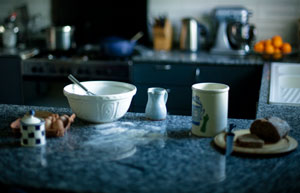







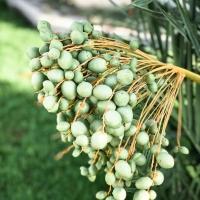
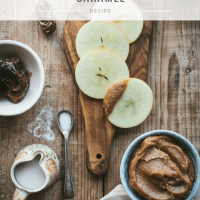

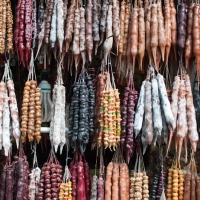
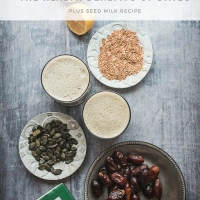

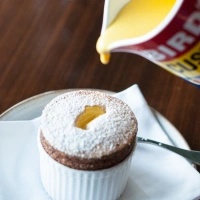



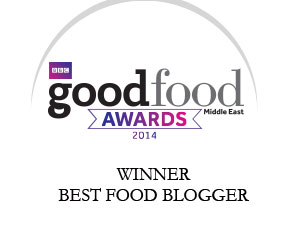



I know just what you mean about your mum. Mine was just the same and how we used to tease her. Now I too have washed out bags drying above the Aga!
I feel so guilty about all the eye-rolling I did!
Wonderful post, Sally! And thank you for the shout-out! I think we all fall into the trap of thinking that because something is recyclable that it’s ok to buy without guilt, forgetting that the recycling process requires a massive input of energy. As you say, we all have to pause for a minute and make considered decisions before we purchase – plus it takes a bit of trial and error to figure out what works for our homes. A friend told me recently that she was reluctant to use beeswax wraps because she was allergic to honey. We on the other hand can’t manage soft silicon in the house, as it always ends up mildewy. It’s lucky we all have alternative green choices! 🙂
The whole recycling issue is a minefield. KP puts everything that even resembles plastic into our pile for the green bin – I don’t know what he imagines will be done with it… I think this is a common misconception. How weird about the mildew – and strange that ours doesn’t given our humidity (or maybe air conditioning prevents it). You continue to inspire me Celia.
Thank you for reminding us that every little bit helps. I am going to give shampoo bars a go.
I’m on the search for toothpaste alternatives…
I do several of these things such as reuse ziplock bags. I have been using bar soap for years. We have some plastic containers that we reuse. I look at the numbers on the plastic before I put it in the recycling bag. 1, 2, and 5 are supposed to be recyclable, at least here in France. We almost always use “real” cutlery and plates. I know some people who use a lot of paper and plastic that way. It’s not always easy to know what is worse, using a certain item or the water, etc. to wash a substitute.
My best guess is that plastic is worse given the energy and resources needed to make it as well as the impact on the planet. It’s often difficult to make the right choice though – KP thinks everything is recyclable… I’m always fishing things like crisp packets out of the pile!
Amazing post Sally and many of your tips I already follow. Although you have scared me on the tea bags – as I sometimes use them for convenience…..will be more diligent now. As for the water bottles I read some recent research about the huge amount of micro plastic particles that leak into the water (and our bodies) – so they’re not only terrible for the environment but for our health too. I recently wrote a post similar to this – so I think you’d also love the Charles Viancin product range I use….check them out – fab alternative to cling wrap!